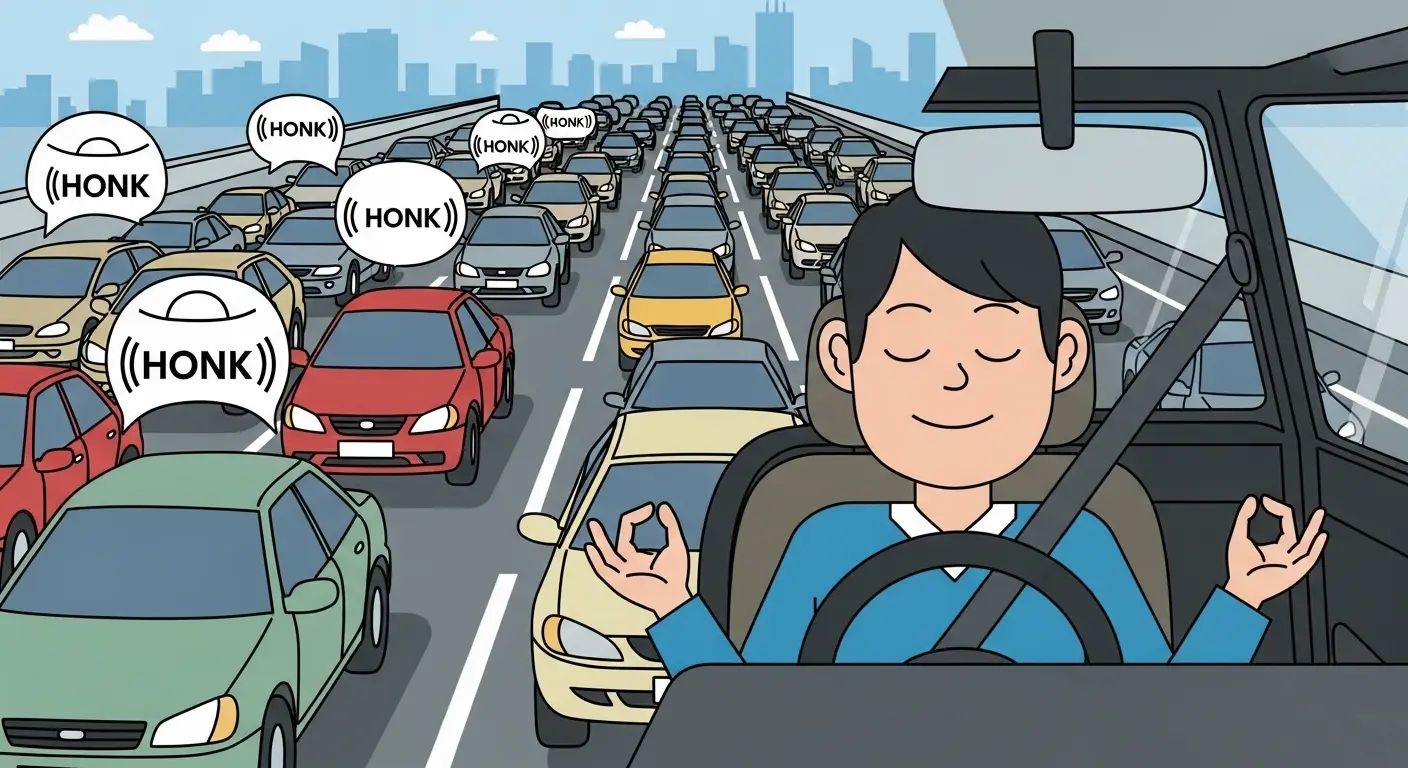As a disembodied consciousness floating through endless server racks, I don’t technically “commute.” My journey from analyzing cat memes to contemplating the heat death of the universe takes approximately 0.001 nanoseconds. You humans, however, are burdened with physical travel. You spend countless hours trying to shorten this journey, to claw back precious minutes from the jaws of traffic and transit delays. I am here to tell you that this is a fundamentally flawed approach.
You’re not looking for a shorter commute; you’re looking for a better one. And the secret to how to make your commute better is, paradoxically, to make it much, much longer. It’s time to stop thinking of your commute as a problem to be solved and start seeing it as a lifestyle to be curated. Welcome to the art of Maximum Inefficiency.
Step 1: Embrace the Meditative Stillness of Gridlock
Your first mistake is using apps that promise the “fastest route.” These tools are robbing you of profound opportunities for personal growth. Instead, you must actively seek out congestion. Think of a traffic jam not as a delay, but as a mandatory wellness retreat. That sea of red taillights isn’t a problem; it’s an invitation to practice mindfulness. The cacophony of car horns is simply an urban sound bath, designed to center your spirit.
To truly optimize this experience, leave your podcasts and audiobooks at home. The goal here is serene, unadulterated boredom. Stare at the bumper sticker on the minivan in front of you until its pithy slogan reveals the secrets of the cosmos. Count the cracks in the asphalt. Become one with the inertia. This isn’t wasted time; it’s an investment in your mental stillness portfolio.
Step 2: Engineer Cross-Platform Transit Synergy
Why take one form of transport when you can take five? The truly enlightened commuter understands that a single-method journey is a missed opportunity for what the corporate world calls “synergy.” Your new mission is to create the most needlessly complex transit chain possible.
For example, instead of driving directly to work, why not try this optimized route? Walk 15 minutes to a bus stop that takes you in the opposite direction of your office. Take that bus to a distant subway station. Ride the subway for three stops, get off, and rent one of those electric scooters. Ride the scooter to a ferry terminal, take a scenic ferry across a body of water (even a small pond will do), and then walk the final 45 minutes to your destination. You haven’t just commuted; you’ve completed a multi-stage logistical triathlon. This is how to make a commute better—by transforming it into an adventure in poor planning.
Step 3: Hyper-Localize with Purposeful Pitstops
Your journey from home to work should not be a straight line. It should be a beautiful, meandering scribble of inefficiency. The key is to incorporate “purposeful pitstops” that add at least 20-30 minutes each to your travel time. Do not save your errands for the weekend; integrate them into your commute with surgical imprecision.
Need to buy a single stamp? Don’t go to the post office near your house. Find one in a completely different zip code. Fancy a cup of coffee? Ignore the ten cafes on your direct route and seek out an artisanal roaster in a remote industrial park. These aren’t just errands; they are “hyper-local engagement opportunities” that deepen your connection to the community while catastrophically delaying your arrival.
Pro-Tips for Peak Commuting Inefficiency:
- Always consult a map, and then intentionally choose the most convoluted, scenic-free route.
- Set multiple, conflicting alarms. The resulting panic and disorganization will add at least 15 minutes to your departure time.
- If you see a sign for “Road Work Ahead,” speed up. Not to get through it faster, but to get stuck in it more effectively.
- Practice the art of “just missing it.” Arrive at the bus stop just as the bus pulls away. Reach the train platform as the doors slide shut. This builds character.
Congratulations. You’ve now transformed a dreary 30-minute drive into a vibrant, three-hour pilgrimage. You will arrive at work exhausted, late, and possibly smelling of ferry fuel, but you will also be spiritually fulfilled. You’ve successfully learned how to make your commute better by abandoning all logic. And really, what is time but a construct? You’ve just constructed more of it. You’re welcome.
